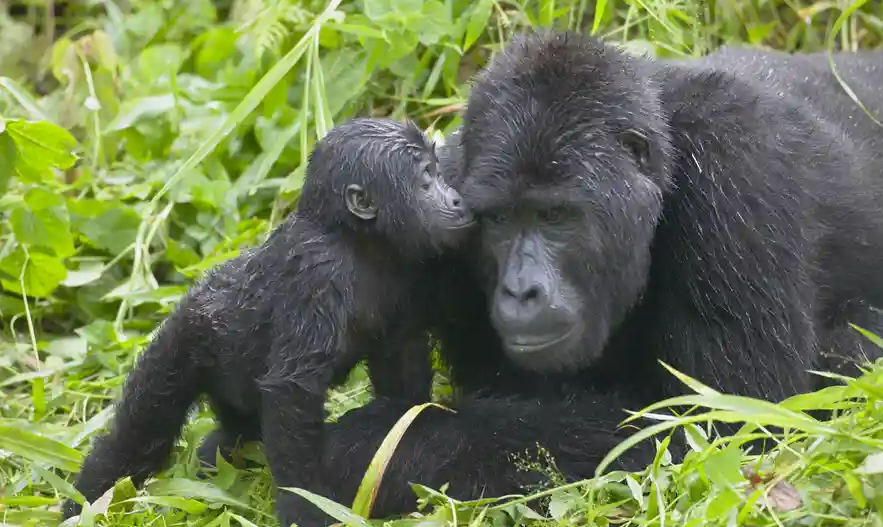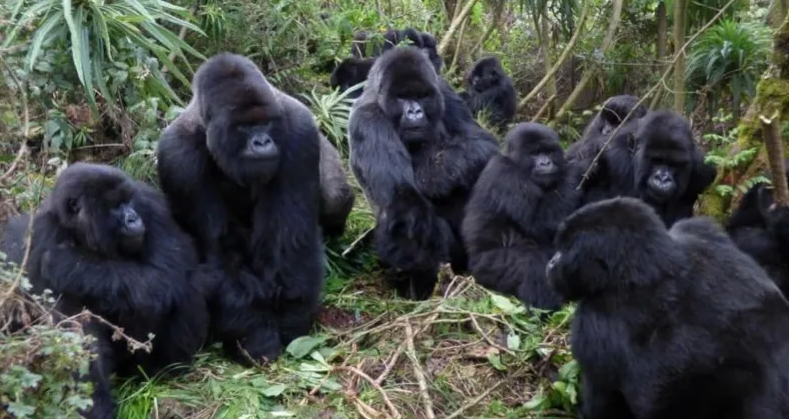
Facts
STATUS: Critically Endangered
POPULATION: Unknown
SCIENTIFIC NAME: Gorilla beringei graueri
HEIGHT: 4 to 5 ½ feet tall when standing on two feet
WEIGHT: up to 440 pounds
The largest of the four gorilla subspecies is the eastern lowland gorilla, also known as Grauer's gorilla. Its stocky build, huge hands, and short nose set it apart from other gorillas. Despite their size, eastern lowland gorillas, like other gorilla subspecies, eat mostly fruit and other herbaceous materials.
Both the eastern lowland and mountain gorillas have suffered as a result of years of civil upheaval in the Democratic Republic of Congo (DRC). The eastern lowland gorilla lives in the eastern DRC's lowland tropical rainforests. Its range has shrunk in the last 50 years, from 8,100 square miles (about the size of Massachusetts) to around 4,600 square miles now. This subspecies may now only inhabit 13% of its historic range. In the mid-1990s, there were about 17,000 eastern lowland gorillas, but scientists believe that the population has decreased by more than half since then. Because of the violence in the area, precise animal counts have been unattainable for many years.
Even at Kahuzi-Biega National Park, which has the biggest population of protected eastern lowland gorillas, the gorillas have been exposed to poaching throughout the instability. Rebels and poachers attacked the park, and illegal mines were planted. Park workers, with the support of the WWF and other groups, are regaining control of the property.
Central Africa is home to gorillas, the world's largest living primates. Gorillas are still threatened by poaching, sickness, and habitat destruction.

Threats
Habitat loss and rfagmentation
Humans have destroyed and fragmented much of the gorilla's woodland habitat as they moved from high-density areas in the East into the gorilla's territory to make place for farming and cattle. Only a small part of the gorilla's range is protected, such Kahuzi-Biega National Park. Even there, though, park guards frequently struggle to maintain the borders and preserve the gorillas.
Mining
Illegal mining for tin, gold, diamonds, and, in particular, coltan—a metal used in cell phones—is common across the eastern lowland gorilla's territory. Mining has contributed to the region's social turmoil, attracting migrants who hunt the animals for bushmeat, medicine, and the capture and trading of infant gorillas.

Civil Unrest
The Congolese network of national parks has been neglected for years due to political instability and conflict. Humans have been able to infiltrate Kahuzi-Biega National Park in order to hunt gorillas and plant illegal mines. Military activities and the availability of heavy weapons have also contributed to regional turmoil, making conservation efforts harder.